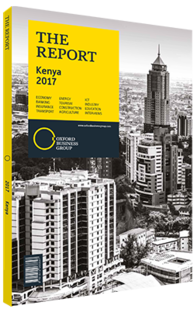Local banks help Kenyan states bridge funding gaps
The market for government debt is changing across Africa, and in ways that pose risks for local banks as well as for their investors and customers. States are looking to their banks to help bridge funding gaps so they can better ride out the cycle of lower commodity prices and tepid global growth. That means it is harder to raise international funds – such as by issuing dollar-denominated eurobonds – and this has caused a jump in the issuance of domestic currency bonds, of which banks are the main buyers.
Analysis from the IMF found a gradual increase in bonds issued for infrastructure, for example, and overall growth in maturities of debt issues. The list of countries that have recently sold local currency debt that will mature in 10 years or more includes Benin, Burkina Faso, Kenya, Mali, Tanzania and Zambia.
Perspective
However, this can create complications for local financial sectors, not only in terms of exposure to sovereign risk, but also in terms of reducing space for lending. Increased exposure to government debt is a principle risk for African banks in 2017, and it suggests less credit availability to private customers, as banks typically prefer buying government debt to commercial lending. Budget revenue targets are not being met by governments, resulting in high amounts of borrowing and a crowd-out of the private sector. According to a 2017 banking sector report by Nairobi-based Sterling Capital, banks have been left with a high number of troubled loans due to an unfavourable economic climate and the high costs of borrowing in the region.
Africa’s banking sector looks largely stable, with major lenders posting continued earnings growth and maintaining healthy capital buffers, according to a recent sector study from Moody’s. The ratings agency considers East Africa a standout region, offering the greatest degree of resilience against deteriorating conditions. However, in 2017 sovereign risk will be elevated as any decline in sovereign creditworthiness will immediately impact banks. Rising uncertainty over fiscal policy saw South Africa’s sovereign credit cut to junk status by two rating agencies. Fitch announced in April 2017 that it was downgrading South Africa’s long-term issuer default ratings – for both foreign and local currency – from “BBB-” to “BB+”, which are considered below investment grade.
Exposure Rising
The IMF has found that government securities dominate domestic markets in Africa, accounting for approximately 90% of the value of local-currency debt instruments in recent years. This comes in spite of a recent push by African economies to issue eurobonds on international markets.
Eurobond issuance rose to record levels from 2013 to 2015, surpassing $6bn in each of those years in sub-Saharan Africa, according to Bloomberg data. This helped lessen governments’ reliance on their domestic banks to provide funding, although the eurobond sank to $2bn in 2016, the lowest since 2012, due to a rising dollar and greater fiscal pressures.
Furthermore, while governments had achieved diversity in creditors 2013-15, most of their countries’ banks have not managed the same with their debtors. Moody’s coverage of African banks and sovereigns includes 33 institutions rated in 11 countries, and the agency found four jurisdictions – Angola, Egypt, Ghana and Nigeria – in which the banking system’s aggregate exposure to government securities exceeded 150% of the value of bank equity. The ratio surpassed 100% in Kenya, Morocco, South Africa and Tanzania. Figures from Kenya indicate total debt had jumped by 26.1% from the third quarter of 2015 to the third quarter of 2016. Of the total $7.3bn of new debt accrued in the period, $5.1bn was sold domestically. This is expected to continue as the revised budget for FY 2016/17 reduced foreign financing from 6.3% of GDP to 4% and boosted domestic financing from 3% to 4.1%. In addition to the government asking more from its banks, it has also capped interest rates on loans to the private sector, providing an additional disincentive to credit extensions.
You have reached the limit of premium articles you can view for free.
Choose from the options below to purchase print or digital editions of our Reports. You can also purchase a website subscription giving you unlimited access to all of our Reports online for 12 months.
If you have already purchased this Report or have a website subscription, please login to continue.

